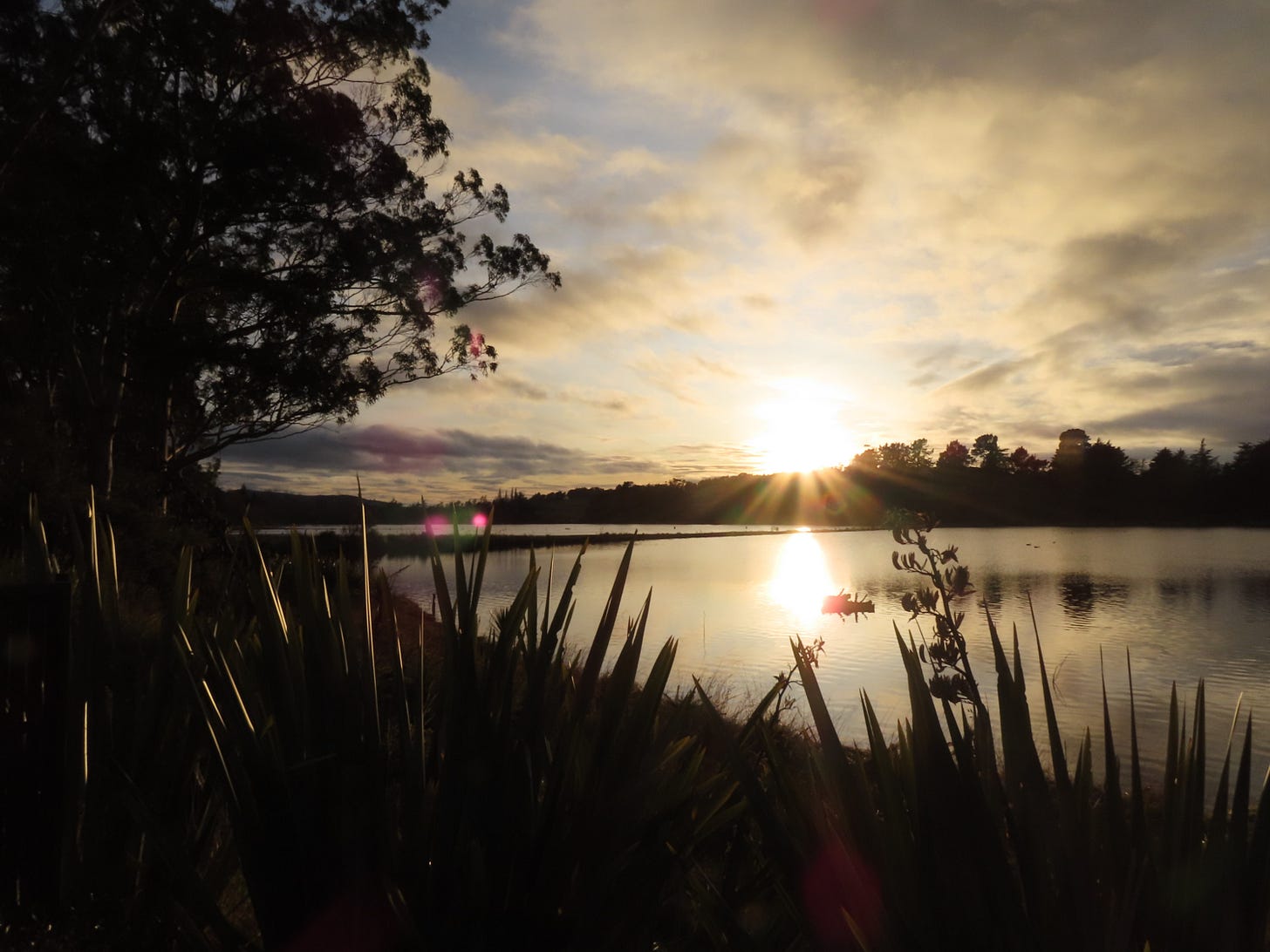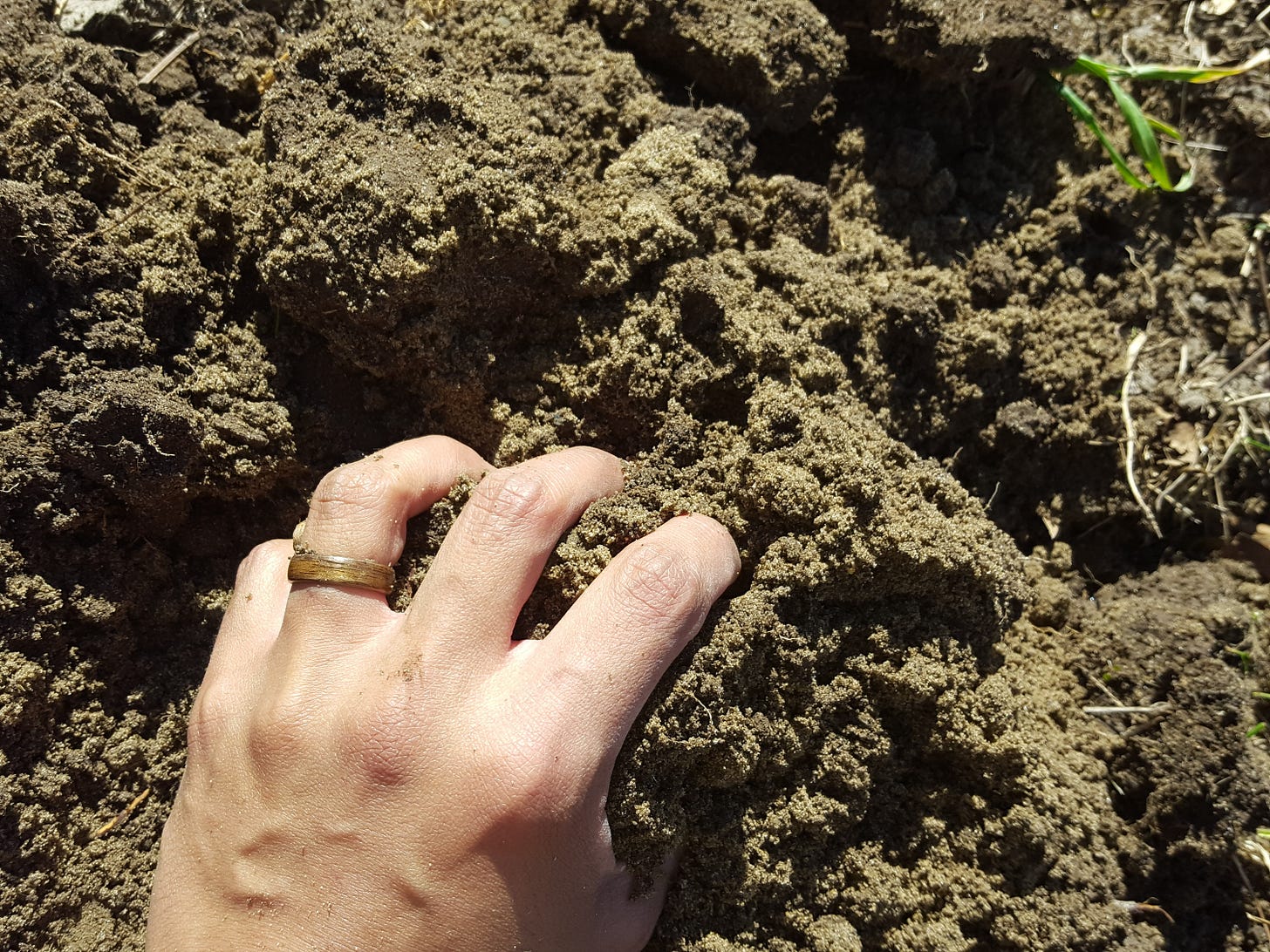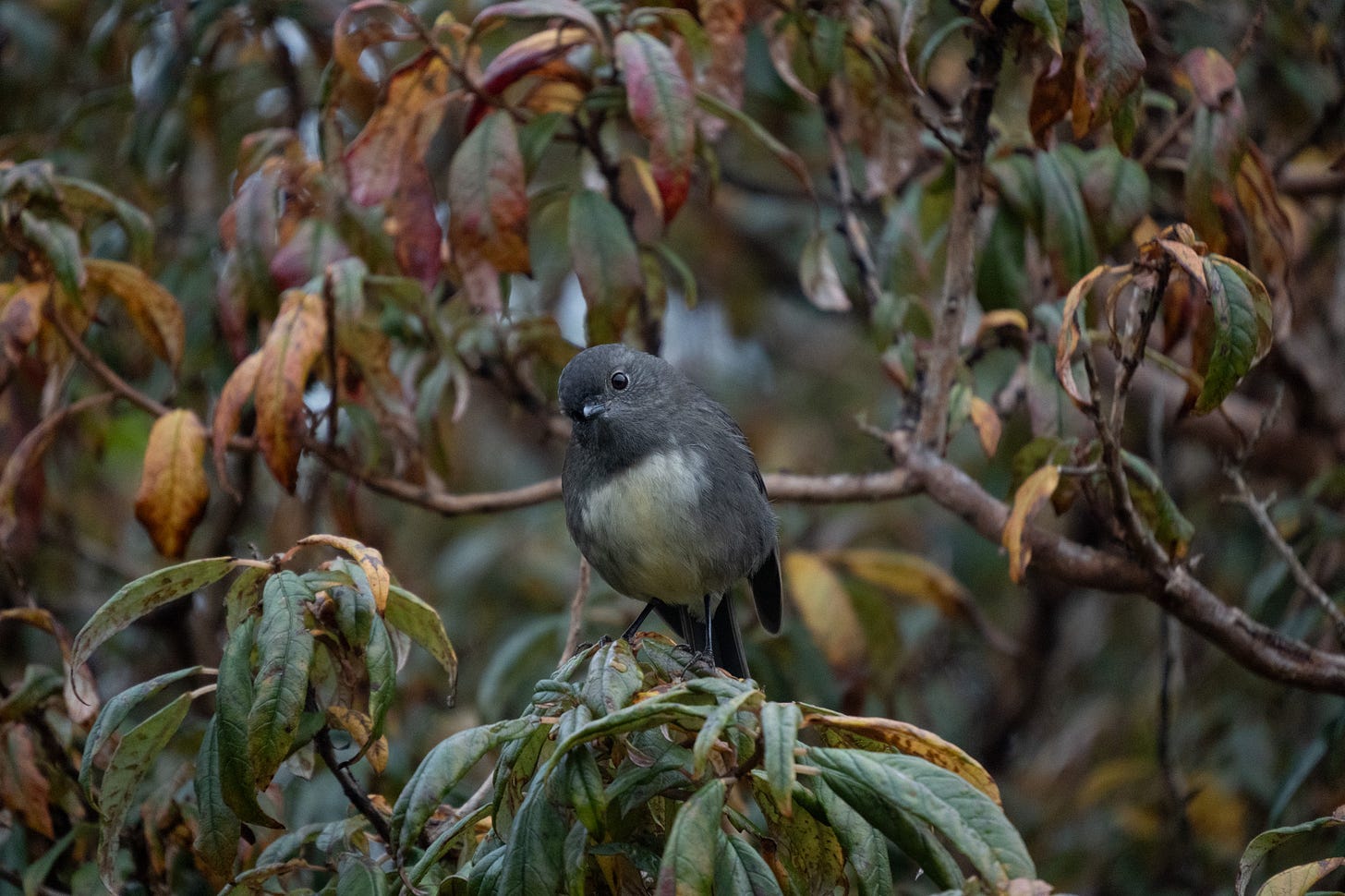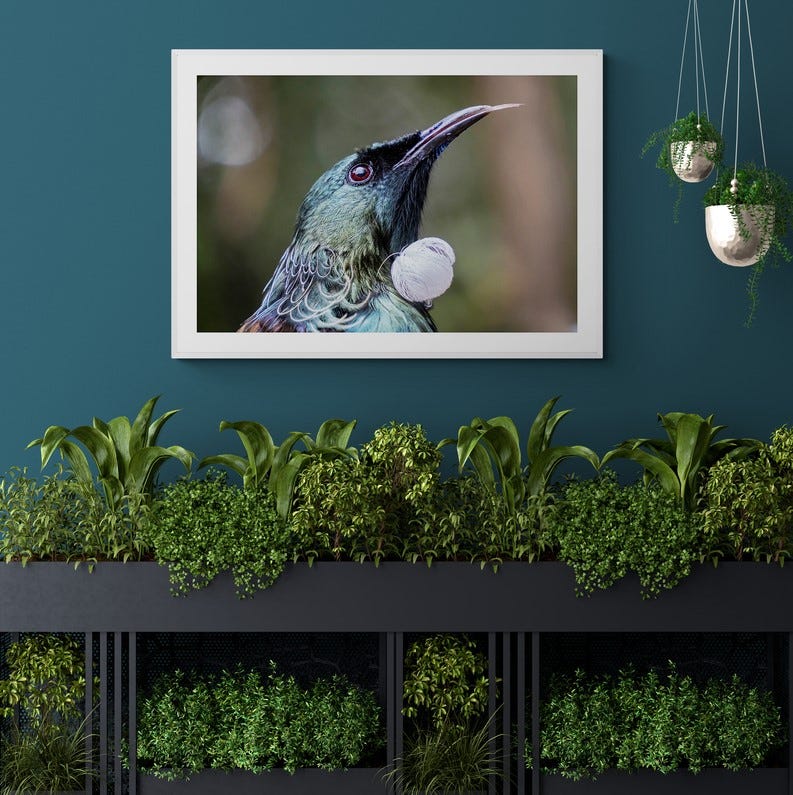Matariki and Our Gardens (4 min read)
Using the Māori new year to reflect, plan, and keep nature at the forefront of our gardens
Good afternoon☀
Yesterday I went for a kōrero (talk) about Matariki (the Māori new year) and Māori astronomy, but to my delight it was so much more than that. The kōrero was given by Victoria Campbell and was both an introduction to te ao Māori (the Māori world view, though obviously there are differences across the country) and a holistic perspective of us and the environment.
For gardeners, the key practical takeaway was to use the whetū of Matariki as guides to reflect on, and plan for, our gardens through a sustainable lens. Matariki is essentially midwinter, so is the perfect time for reviewing previous growing seasons and thinking about the upcoming one.

Above are the whetū of the Matariki star cluster. Today I’m going to focus on two that are of particular relevance to gardeners: Tupuānuku (for what grows in the ground), and Tupuārangi (for what grows above the ground).
Tupuānuku
“Tupuānuku is the star connected to anything within the soil. This star also represents geographical features such as mountains, plains, and valleys. She is associated with the food grown in the ground, both cultivated (i.e. grown in gardens) and uncultivated. Tupuānuku is comprised of two words: ‘tupu’ which can mean ‘new shoot’ or ‘to grow’, and ‘nuku’, an abbreviation of ‘Papatūānuku’ (Earth mother). Tupuānuku resides in the domain of Rongo-mā-Tāne, the atua of agriculture.”1
For me, this is the heart of garden planning. I am thinking about the soil in different parts of my garden: the vegetable patch needs more compost for healthy crops this season; our big flower bed has dry soil year-round so I will use it for wildflowers; I noticed very little puddling in our (clay-heavy soil) orchard since we have changed from lawn to meadow; our compost needs to be turned.
But considering soil from a holistic perspective I am also thinking about what enters/exits our garden. Will I need to bring in any compost, soil, or fertiliser? (My hope is no, as we have three big bins full of compost-in-the-making). What will run off from my garden? What plants do I have that may pose a threat if/when they are carried off by water, wind, or birds? What critters have made a home in the soil, and what role do they have in the wider ecosystem?
My main goal here is to keep everything natural/organic, and to recycle nutrients within my garden ecosystem.
Tupuārangi
“Tupuārangi (Atlas) is the star linked to food and growth above the ground. Tupuārangi also has a strong connection with birds. Tupuārangi is comprised of two words: tupu which can mean ‘new shoot’ or ‘to grow’, and rangi (sky), an abbreviation of ‘Ranginui’ (sky father). Tupuārangi has influence over the domains of Tāne, the atua of the forest, Haumietiketike, the atua of uncultivated foods and insects, and Tūtewehiwehi, the father of reptiles, fern roots, nīkau, harakeke, and silver tree fern (ponga).”2
While Tupuārangi is linked to food and growth above ground - our trees, flowers, fruit, and berries - I find myself thinking most of the ngā manu (birds).
What birds do I see in my garden, and how does this change through the years? How does this change through the seasons? What birds occur in my region - but don’t visit my garden? (Try using iNaturalist, eBird, and the NZ Garden Bird Survey - or chatting with people in your area).
In our garden, I have noticed that there is little food for our native nectar eaters (particularly tūī and korimako) outside of summer and spring, but we have pīwakawaka and riroriro throughout the year. We have many introduced birds - sparrows, finches, dunnocks, starlings, blackbirds - which makes sense as we are in an agricultural region.
Planning for the future, I am planting more native flowering plants to provide a natural food source for these birds. I am also considering my predator control options, and continuing to provide for songbirds.
What questions will you be mulling over this winter for the upcoming growing season? Or if you are in the northern hemisphere - how is your summer garden? What changes are you noticing? What is bringing you joy?
I hope you are all able to spend some quiet moments outside, soaking in nature,
Zenobia❄
If you’d like to bring a bit of nature into your home, you can purchase art prints featuring some of my favourite garden wildlife from $39 (free shipping in NZ).
The Weekly Wildlife newsletter is free, but if you’d like to support my work & receive member-only posts, join with a monthly or annual subscription.
If you would like to support The Dwindle River Garden with a one-off donation, tap the button below.









That’s fascinating, Zenobia. I really enjoyed reading what you have summarised so eloquently There’s so much to learn, isn’t there?